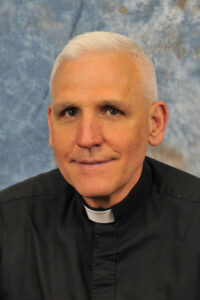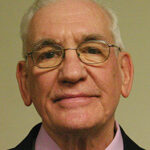By Father Bill Kneemiller

I love images of the Jerusalem Temple and what it looked like at the time of Jesus, just decades before it was destroyed in Jerusalem’s war with Rome in 70 AD. We recall that the core of the temple was praying the psalms morning, day and night. The early Christians adopted this prayer tradition, which has continued for the past two millenniums in our discipline of praying the Liturgy of the Hours. “The greatest thing we can do is to offer God praise morning, noon, and evening” (Psalm 55: 11).
Although the Jerusalem Temple is no more, your own home can be a temple where again the psalms and Scripture are prayed and revered. The Catechism describes the Liturgy of the Hours as “The Prayer of the Church,” which extends the praise of the Mass throughout the day. Why have many Catholics never heard this? It’s likely because the prayer books of the complete version of the Liturgy of the Hours are four thick volumes that contain thousands of pages of prayers. There is also a one-volume “Christian Prayer” book, which many people have embraced. I like to promote the “Shorter Christian Prayer” book, which has the complete Morning, Evening and Night prayers and fits nicely in your back pocket!
In the past couple of years, I have given a dozen talks on the “Shorter Christian Prayer” book to prayer groups and Knights of Columbus (KofC) councils and to the KofC State Convention last April. I encourage families and KofC groups to obtain their own book and begin by praying Night Prayer in the “Shorter Christian Prayer” book and then move on to Morning and Evening prayer as time permits. In addition, praying the Liturgy of the Hours is a complement to praying the rosary, which is, of course, the devotion of the Church.
One KofC story: I am chaplain for the Blue Grass KofC and at a recent council meeting most of the fellows brought their “Shorter Christian Prayer” book with them. At the meeting’s end, I invited them to stay for the five-minute Night Prayer. They all stayed and half of them stayed longer to learn more about praying Morning or Evening Prayer.
When introducing Morning and Evening Prayer, I mention the direct connection of the weeks of Ordinary Time and the liturgical seasons to the four-week cycle of the Liturgy of the Hours. I gave the KofC a short explanation of Ordinary Time, which refers to the Latin “ordinis” — meaning the entire week is ordered to Sunday — Christ’s victory over sin and death. I could see the light go on with them as they realized that Ordinary Time is about ordering the week to Sunday, which gives Christ’s day greater and more prayerful significance. Thus, our homes can be a “little temple” that invites our Lord to come into our homes and our hearts!
(Father Bill Kneemiller is a retired priest of the Diocese of Davenport. Email him if your prayer group or council would like an introduction to “The Prayer of the Church” at kneemillerw@diodav.org.)











